Felipe Kenji Nakano
Oxytrees: Model Trees for Bipartite Learning
Nov 16, 2025Abstract:Bipartite learning is a machine learning task that aims to predict interactions between pairs of instances. It has been applied to various domains, including drug-target interactions, RNA-disease associations, and regulatory network inference. Despite being widely investigated, current methods still present drawbacks, as they are often designed for a specific application and thus do not generalize to other problems or present scalability issues. To address these challenges, we propose Oxytrees: proxy-based biclustering model trees. Oxytrees compress the interaction matrix into row- and column-wise proxy matrices, significantly reducing training time without compromising predictive performance. We also propose a new leaf-assignment algorithm that significantly reduces the time taken for prediction. Finally, Oxytrees employ linear models using the Kronecker product kernel in their leaves, resulting in shallower trees and thus even faster training. Using 15 datasets, we compared the predictive performance of ensembles of Oxytrees with that of the current state-of-the-art. We achieved up to 30-fold improvement in training times compared to state-of-the-art biclustering forests, while demonstrating competitive or superior performance in most evaluation settings, particularly in the inductive setting. Finally, we provide an intuitive Python API to access all datasets, methods and evaluation measures used in this work, thus enabling reproducible research in this field.
Pairwise and Attribute-Aware Decision Tree-Based Preference Elicitation for Cold-Start Recommendation
Oct 31, 2025


Abstract:Recommender systems (RSs) are intelligent filtering methods that suggest items to users based on their inferred preferences, derived from their interaction history on the platform. Collaborative filtering-based RSs rely on users past interactions to generate recommendations. However, when a user is new to the platform, referred to as a cold-start user, there is no historical data available, making it difficult to provide personalized recommendations. To address this, rating elicitation techniques can be used to gather initial ratings or preferences on selected items, helping to build an early understanding of the user's tastes. Rating elicitation approaches are generally categorized into two types: non-personalized and personalized. Decision tree-based rating elicitation is a personalized method that queries users about their preferences at each node of the tree until sufficient information is gathered. In this paper, we propose an extension to the decision tree approach for rating elicitation in the context of music recommendation. Our method: (i) elicits not only item ratings but also preferences on attributes such as genres to better cluster users, and (ii) uses item pairs instead of single items at each node to more effectively learn user preferences. Experimental results demonstrate that both proposed enhancements lead to improved performance, particularly with a reduced number of queries.
Hierarchy exploitation to detect missing annotations on hierarchical multi-label classification
Jul 13, 2022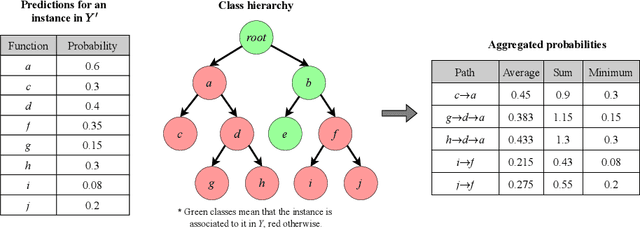
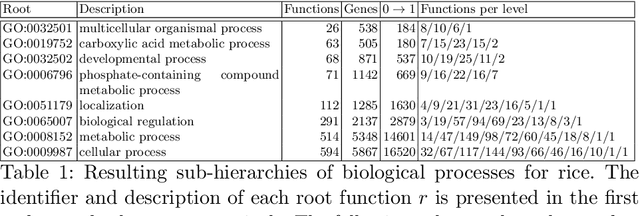
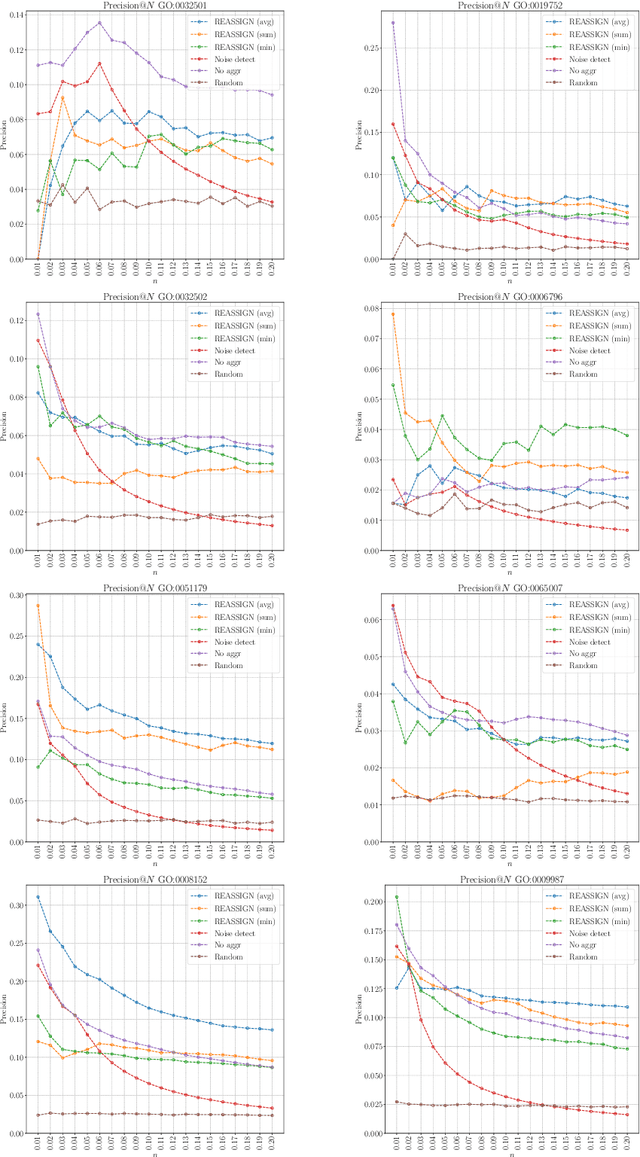
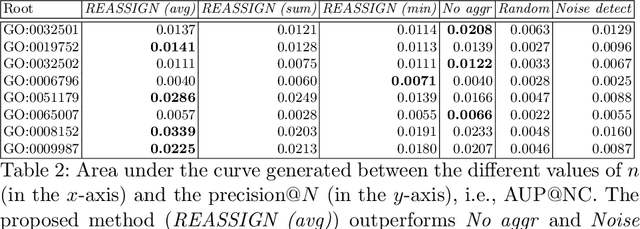
Abstract:The availability of genomic data has grown exponentially in the last decade, mainly due to the development of new sequencing technologies. Based on the interactions between genes (and gene products) extracted from the increasing genomic data, numerous studies have focused on the identification of associations between genes and functions. While these studies have shown great promise, the problem of annotating genes with functions remains an open challenge. In this work, we present a method to detect missing annotations in hierarchical multi-label classification datasets. We propose a method that exploits the class hierarchy by computing aggregated probabilities to the paths of classes from the leaves to the root for each instance. The proposed method is presented in the context of predicting missing gene function annotations, where these aggregated probabilities are further used to select a set of annotations to be verified through in vivo experiments. The experiments on Oriza sativa Japonica, a variety of rice, showcase that incorporating the hierarchy of classes into the method often improves the predictive performance and our proposed method yields superior results when compared to competitor methods from the literature.
Explaining random forest prediction through diverse rulesets
Mar 29, 2022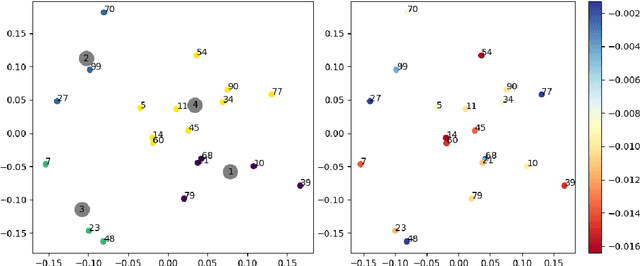
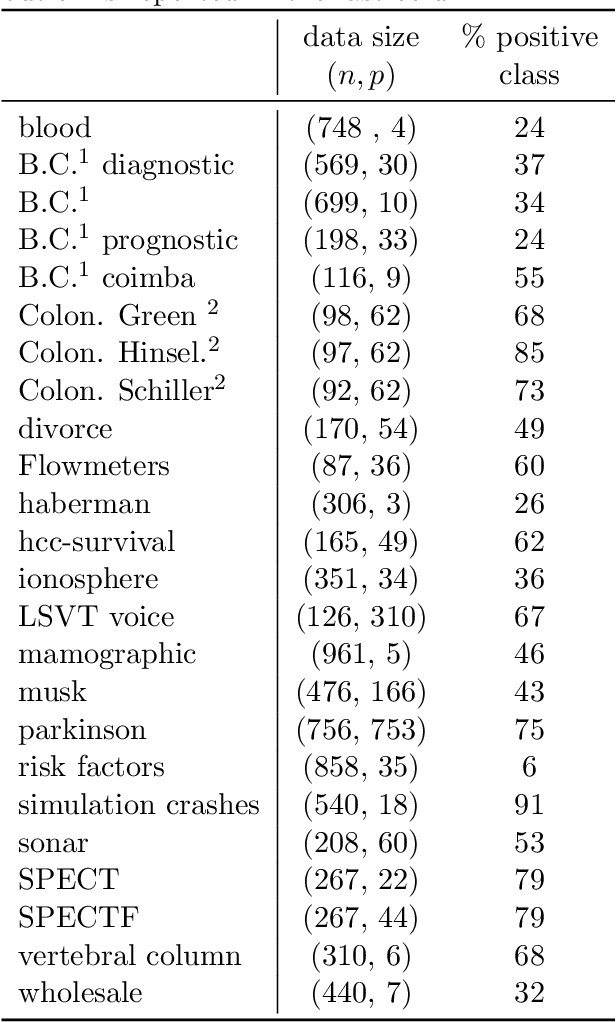
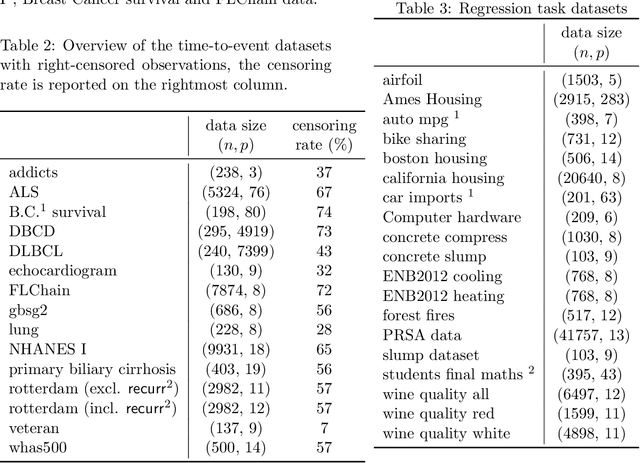
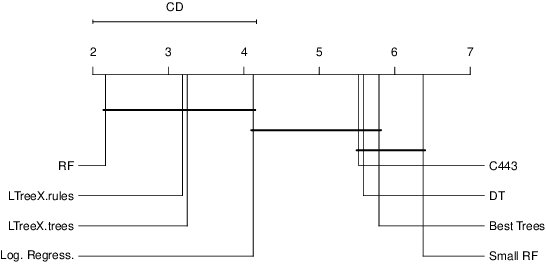
Abstract:Tree-ensemble algorithms, such as random forest, are effective machine learning methods popular for their flexibility, high performance, and robustness to overfitting. However, since multiple learners are combined,they are not as interpretable as a single decision tree. In this work we propose a methodology, called Local Tree eXtractor (LTreeX) which is able to explain the forest prediction for a given test instance with a few diverse rules. Starting from the decision trees generated by a random forest, our method 1) pre-selects a subset of them, 2) creates a vector representation, and 3) eventually clusters such a representation. Each cluster prototype results in a rule that explains the test instance prediction. We test the effectiveness of LTreeX on 71 real-world datasets and we demonstrate the validity of our approach for binary classification, regression, multi-label classification and time-to-event tasks. In all set-ups, we show that our extracted surrogate model manages to approximate the performance of the corresponding ensemble model, while selecting only few trees from the whole forest.We also show that our proposed approach substantially outperforms other explainable methods in terms of predictive performance.
An Adaptive Hybrid Active Learning Strategy with Free Ratings in Collaborative Filtering
Mar 11, 2022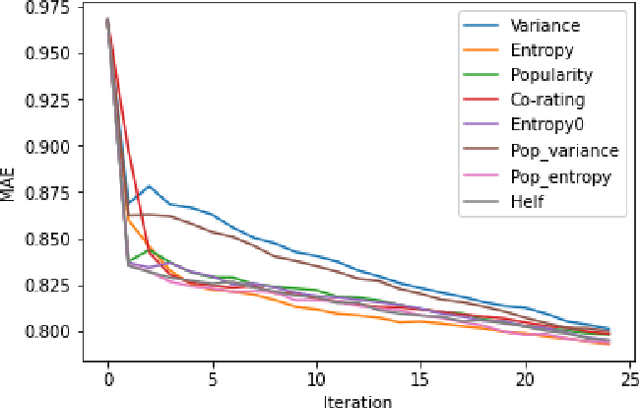
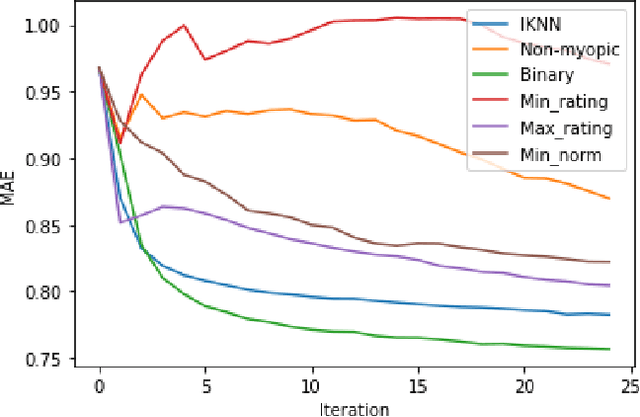
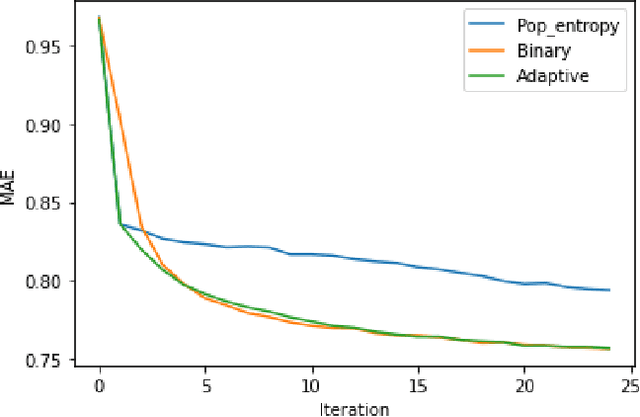
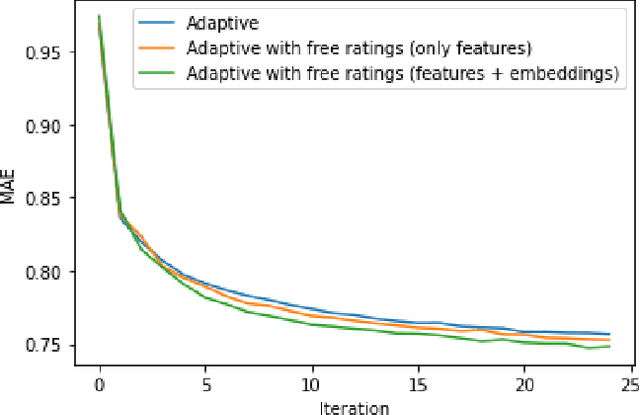
Abstract:Recommender systems are information retrieval methods that predict user preferences to personalize services. These systems use the feedback and the ratings provided by users to model the behavior of users and to generate recommendations. Typically, the ratings are quite sparse, i.e., only a small fraction of items are rated by each user. To address this issue and enhance the performance, active learning strategies can be used to select the most informative items to be rated. This rating elicitation procedure enriches the interaction matrix with informative ratings and therefore assists the recommender system to better model the preferences of the users. In this paper, we evaluate various non-personalized and personalized rating elicitation strategies. We also propose a hybrid strategy that adaptively combines a non-personalized and a personalized strategy. Furthermore, we propose a new procedure to obtain free ratings based on the side information of the items. We evaluate these ideas on the MovieLens dataset. The experiments reveal that our proposed hybrid strategy outperforms the strategies from the literature. We also propose the extent to which free ratings are obtained, improving further the performance and also the user experience.
Deep tree-ensembles for multi-output prediction
Nov 03, 2020
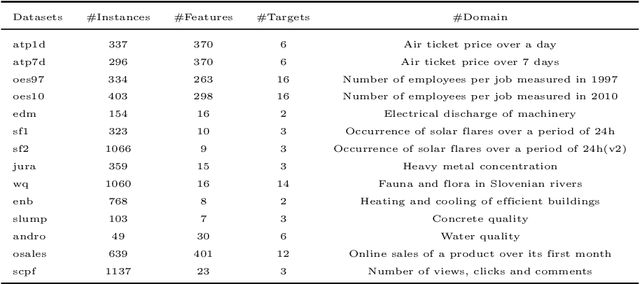


Abstract:Recently, deep neural networks have expanded the state-of-art in various scientific fields and provided solutions to long standing problems across multiple application domains. Nevertheless, they also suffer from weaknesses since their optimal performance depends on massive amounts of training data and the tuning of an extended number of parameters. As a countermeasure, some deep-forest methods have been recently proposed, as efficient and low-scale solutions. Despite that, these approaches simply employ label classification probabilities as induced features and primarily focus on traditional classification and regression tasks, leaving multi-output prediction under-explored. Moreover, recent work has demonstrated that tree-embeddings are highly representative, especially in structured output prediction. In this direction, we propose a novel deep tree-ensemble (DTE) model, where every layer enriches the original feature set with a representation learning component based on tree-embeddings. In this paper, we specifically focus on two structured output prediction tasks, namely multi-label classification and multi-target regression. We conducted experiments using multiple benchmark datasets and the obtained results confirm that our method provides superior results to state-of-the-art methods in both tasks.
 Add to Chrome
Add to Chrome Add to Firefox
Add to Firefox Add to Edge
Add to Edge